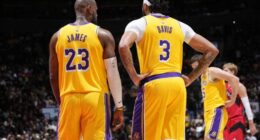3.) Luxury Tax: “Teams pay $1 for every $1 their salary is above the luxury-tax threshold in 2011-12 and 2012-13. Starting in 2012-13, teams pay an incremental tax that increases with every $5 million above the tax threshold ($1.50, $1.75, $2.50, $3.25, etc.). Teams that are repeat offenders (paying tax at least four out of the past five seasons) have a tax that is higher still — $1 more at each increment ($2.50, $2.75, $3.50, $4.25, etc.)”
Paying over $40 million in taxes is understandable when you’re raking in championships, but when Kobe Bryant and Pau Gasol’s performances decline at the tail ends of their expensive contracts, Dr. Buss won’t be laughing all the way to the bank anymore. This new wrinkle, coupled with the previous one, promotes teams under the cap to spend and for teams over the cap to shave salary. Stern hopes by balancing the teams’ spending, every team will have a fair shot at making a long playoff run.
Someone needs to tell the commissioner there’s a difference between spending to win and spending just for the sake of spending to reach the minimum salary, look no further than Rudy Gay’s contract.
4.) Mid-Level Exception: “For non-taxpaying teams, four years starting at $5 million (base salary grows by 3 percent annually beginning in 2013-14), with 4.5 percent raises. Taxpaying teams are limited to three years, a $3 million base salary (which grows by 3 percent annually beginning in 2013-14) and 4.5 percent raises. Teams with cap room (therefore losing their midl-evel exception) get a new mid-level that is for two years and starts at $2.5 million (growing 3 percent annually.)”
My take: Again, Stern and his goons are trying to restrict the rich from getting richer. For example, Shane Battier is now in the stage of his career when winning trumps riches. Instead of saying ‘forget the Grizzlies I’ll take the Lakers’ $5 million mid-level exception and a ring,’ he’ll have to leave an additional $2 million on the table. The Lakers have been extremely successful in the past at luring veterans to join their team with their mid-level exception. It will definitely become a harder sell for the Lakers’ brass to convince players to take less money and come to Los Angeles. But really, what’s sacrificing $2 million for a shot at playing at the Staples Center and living in the most beautiful city on the west coast?
5.) Trade Rules: “Taxpaying teams can acquire no more than 125 percent plus $100,000 of the salaries they trade away (same as 2005 CBA). Non-taxpaying teams (based on their post-trade salary level) can acquire up to the lesser of 150 percent plus $100,000, or 100 percent plus $5 million of the salaries they trade away. The cash a team pays or receives in trade is limited to $3 million annually.”
My take: Teams will now have more flexibility to trade. Thankfully the “Carmelo Rule,” which would’ve prevented a team from signing a player acquired to an extension in the final year of his deal, isn’t a part of these new trade rules. This means we’ll be seeing three more episodes of the Carmelo saga this season in Dwight Howard, Chris Paul and Deron Williams (all of whom have rejected a contract extension from their current teams).
This is good news for Laker fans, as it means the chances of one of those mega stars being traded just increased exponentially. As we’ve learned from the past two seasons, not signing a contract extension is an informal request for a trade. Memo to Mitch Kupchak: get on the phone with Otis Smith (Orlando’s general manager) and tell him he can have anybody he wants but the Black Mamba for Superman so the Lakers can maximize whatever is left of Bryant’s protracted prime.
6.) Length of the agreement: “Ten years, with a mutual opt-out (either side can opt out) in 2017.”
My take: Thank goodness I won’t have to write about this stuff for at least another six years.






